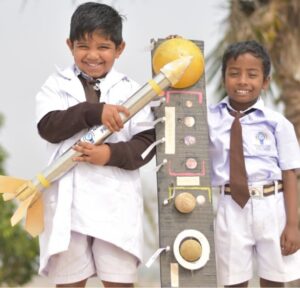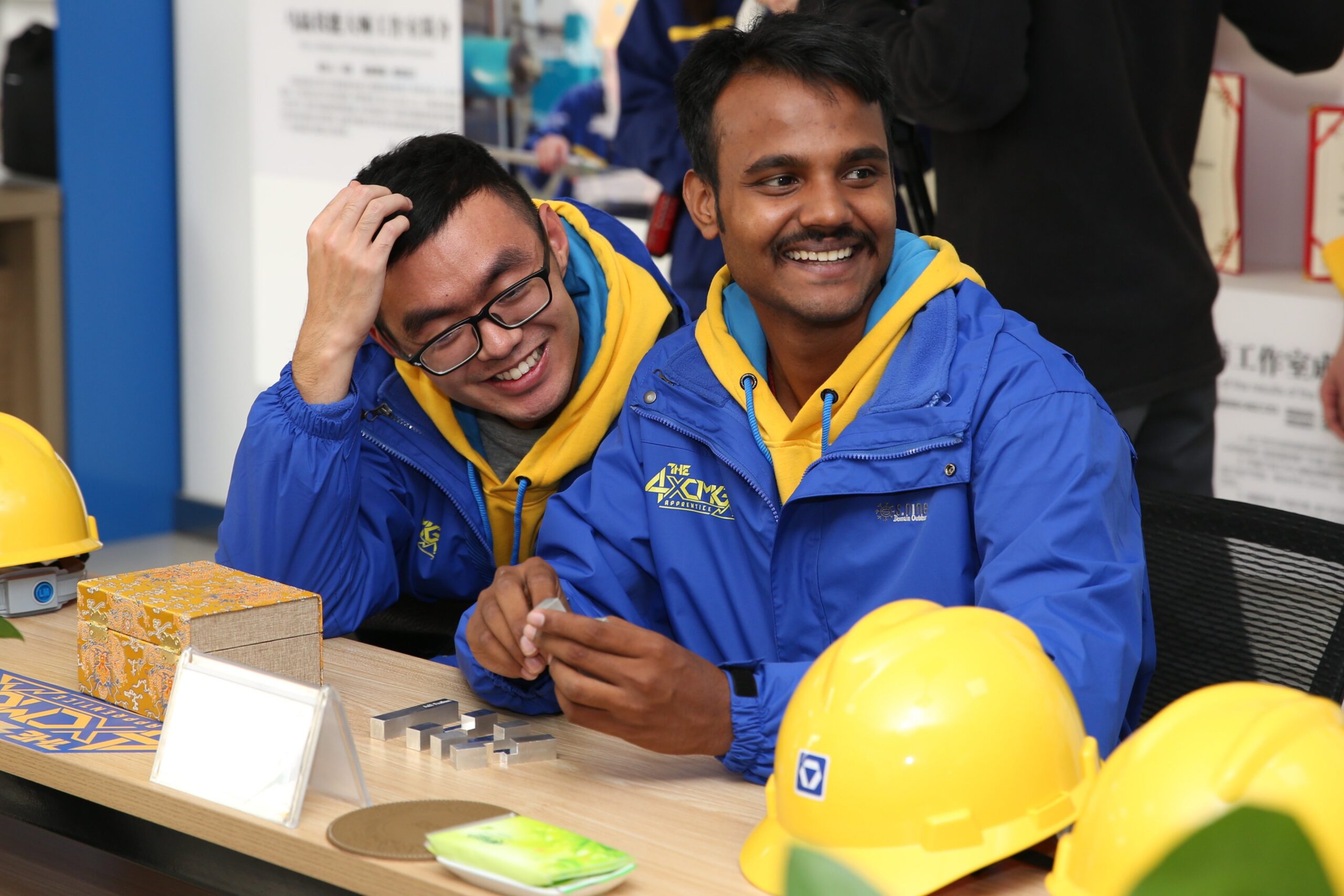Anil Pradhan (AP) is the founder of the I nternational Public School for Rural Innovation (IPSFRI), an initiative started in 2015 to educate Odisha’s under-privileged students in STEM education using an interdisciplinary curriculum. The larger mission of IPSFRI, located in Odisha’s Cuttack district, is to underline the fact that innovation and entrepreneurship can be fostered not just in relatively privileged urban India, but in rural India too. As Pradhan and IPSFRI have worked to realise this mission, they have pioneered interdisciplinary STEM education at the grassroots level, while also educating 15,000 rural students in the process.
nternational Public School for Rural Innovation (IPSFRI), an initiative started in 2015 to educate Odisha’s under-privileged students in STEM education using an interdisciplinary curriculum. The larger mission of IPSFRI, located in Odisha’s Cuttack district, is to underline the fact that innovation and entrepreneurship can be fostered not just in relatively privileged urban India, but in rural India too. As Pradhan and IPSFRI have worked to realise this mission, they have pioneered interdisciplinary STEM education at the grassroots level, while also educating 15,000 rural students in the process.
However, Pradhan’s work doesn’t just stop at IPSFRI. An advocate of learning through innovation, Pradhan has also developed several programmes in innovation such as the IPSFRI-IIT Delhi Rural Innovation Programme, that helped students of IIT Delhi solve real-life problems in rural India. As the lead of design, content development, and training at IPSFRI, Pradhan has built the capacities of partner organizations in terms of implementing innovative teaching methodologies. His initiatives are recognized by XCMG, the Government of China, the World Youth Forum, the Government of Egypt, and various state governments of India.
For his services to education, Pradhan received the ‘National Youth Icon’ Award in 2018 in the field of innovation. In this interview, Pradhan sits down with The Bastion’s Ipsita Mishra (IM) to discuss his life’s work, STEM education, teaching in rural India, and strong classroom pedagogies
IM: What motivated you to bring STEM education and classes innovation to rural settings?
AP: Being an engineer myself, I understood the role of ideas and innovation in my life during my time working in Asia’s first student rocket team, where I was the Chief Designer.

The main motive to start an innovation school in a rural area was also to eradicate the problems I faced when I was younger. I believe that background doesn’t define the calibre of a child’s mind. Rather, it is the learning process and a healthy environment that makes the difference. When these children are given the same opportunities as slightly more privileged students, they can do wonders. I strongly believe that rural students can dream big and achieve big, and I can help be the bridge in this situation, by using my experience in the field of innovation and entrepreneurship. I wanted the students to enjoy studying and since STEM education had enabled me to do so, I introduced it here.
So, that’s why I introduced innovation in the school’s curriculum, wherein I’ve designed several innovative methods for teaching students of different classes.
IM: In your opinion, what are some of the challenges faced by the current education system?
AP: The education system that we are following is the same as what it was taught 50 years ago. We are all talking about the ‘Industrial Revolution 4.0’ and preparing our youth to be global citizens of the 21st century.
Yet, our students rarely visualize or practice what they are studying, and end up learning for the sake of passing the subject. Many students really do have a fear of subjects like Science and Mathematics. This isn’t how we should be preparing our students for the world that awaits them.
So, it is high time to combine practical learning with theoretical concepts taught in school. That’s what we aim to do at IPSFRI.
IM: How do pedagogical frameworks like technology education and innovation help students learn better? What are student-friendly ways of teaching the same?
AP: The sole purpose of introducing technology and innovation in the school’s curriculum was to make the learning process smoother. It becomes smoother in this case, because the students get familiarised with the practical aspects of the topics they learn in class. We want the students to feel the science, not fear science!
To make this happen, we developed several teaching aids that would help the students understand concepts better. These aids are helpful even for our Nursery students. Here’s one example – we have developed a handwriting apparatus, which is nothing but a needle and a thread. Students are asked to perform all the permutations and combinations of how they can use their fingers to insert the thread in the needle. And bingo, that’s how our Nursery students learn to hold a pencil!
IM: How can STEM education transform the current education system?
AP: STEM education has been found to develop critical thinkers and innovators. Currently, innovation is required in every field to sustain the economy; developing this bent for innovative thinking can be done by introducing STEM education into the student’s curriculum. It gives students’ opportunities to see real-life problems, and develop a spark or passion to learn more in this field to help solve them. This eventually encourages experimentation, teamwork and problem-solving capabilities, which will transform our current models of learning.
IM: How do the methodologies used at your school help students learn the concepts better?
AP: Our STEM education is specially tailored to rural schools. We educate our students in the local regional language, in this case Odia, and through this strive to empower and support local youth on their own cultural terms.
Here in IPSFRI and Navonmesh Prasar Kendra, we use innovative tools to teach even the simplest lessons to our students. Our campus has an innovation room equipped with a 3D printer, laser cutters, drill machines, cutting machines, woodcutters, welding machines, and all kinds of small tools that would help the students in understanding their lessons in a much more practical way. Also, all these machines are equipped with ‘kill switch technology’ that would ensure the safety of the students. Our centre offers different one of a kind classes like – तोड फोड जोड tod-phod-jod, कबाड़ से-जुगाड़ kabad-se-jugaad, and ज़ोर का झटका zor-ka-jhatka. All of these practice-oriented classes help in strong concept development and comprehension.
IM: What are some of your future goals for the school?
AP: I don’t want to limit my mission to just one place: the goal is to expand and cater to the needs of many more rural students. To that end, my team and I are coming up with a new school – Navonmesh Prasar School for Innovative Learning (NaPSIL) which will run in Dhenkanal district, another rural area. This will be a residential school, and hopefully give strong learning opportunities in innovation and entrepreneurship to a large number of students.
Featured image courtesy of Anil Pradhan | Views expressed are personal.






